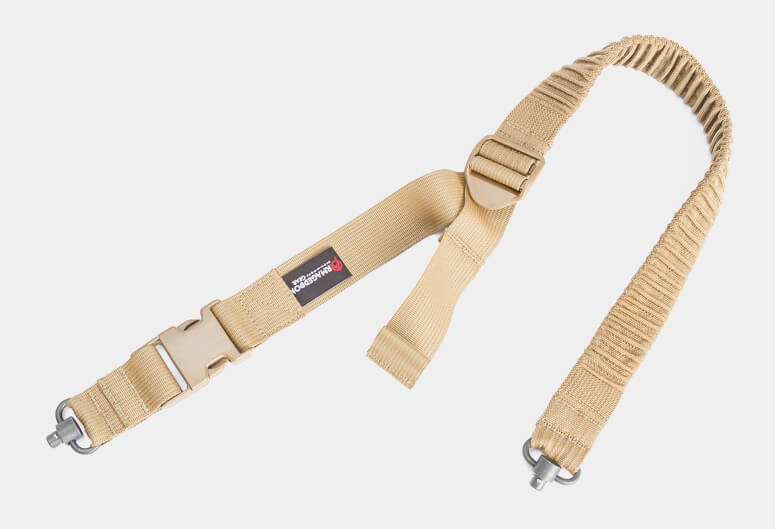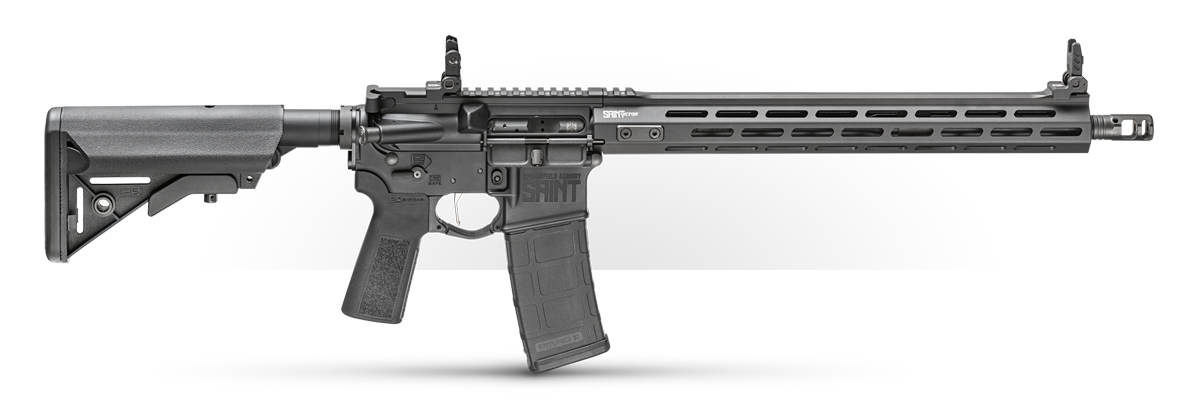If you are going to shoot and train with a rifle for real-world applications, you have to have a sling. It’s the same as how you have to incorporate your holster for your pistol into training to be truly effective with that pistol.
No matter the gun, we have to train on how to get it from a ready position, or even a resting position, and into the fight. Being slow or clumsy could have fatal results should you ever need to protect yourself in an event like a home invasion. So, being efficient with a rifle sling is something non-negotiable.
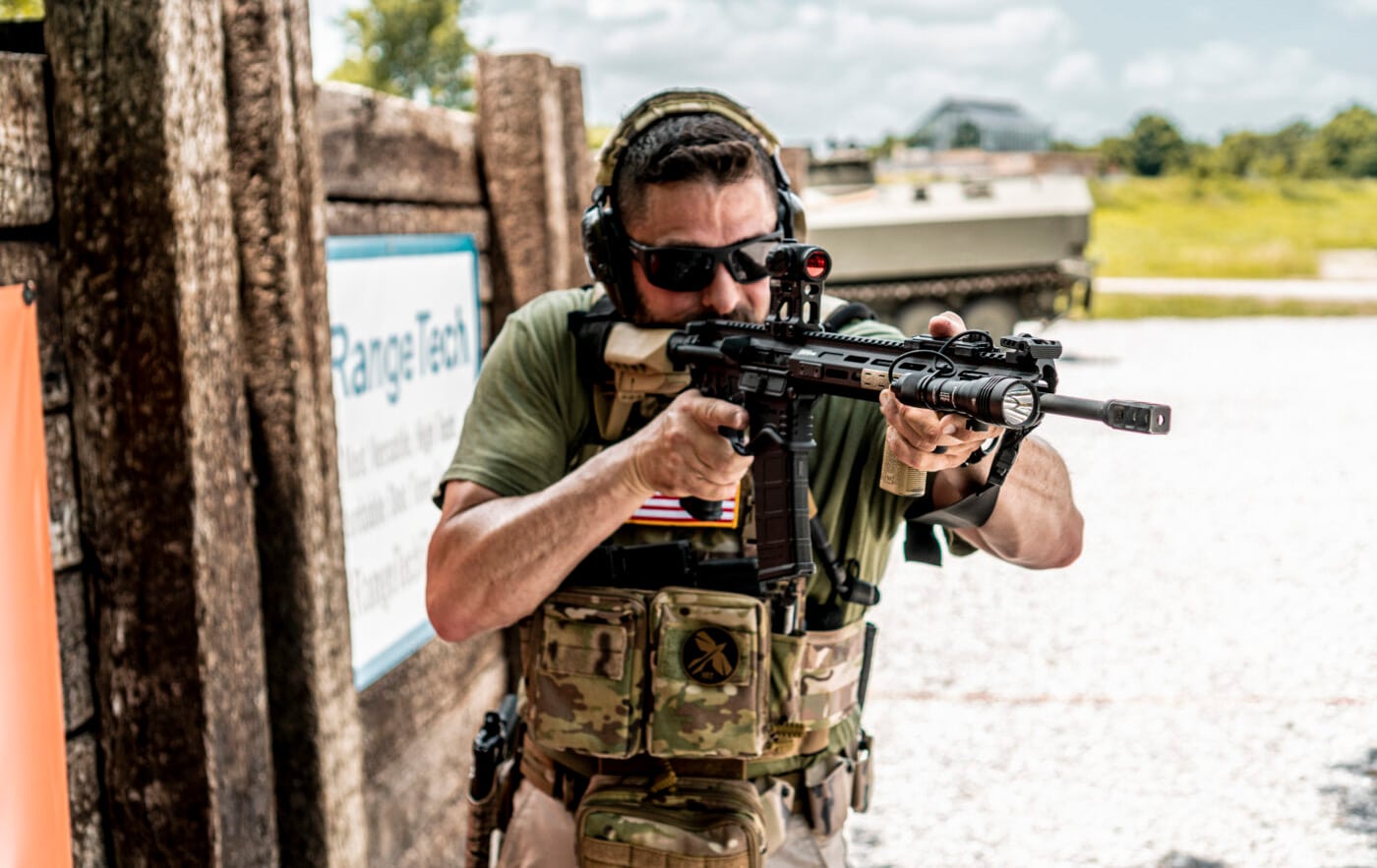
This goes much deeper than you may realize, and requires some thought and effort. It’s its own skillset in a way. Learning how to use your rifle quickly without getting tangled and caught up in your sling, while also being fast and accurate, takes practice. There are a number of ways things can go wrong, and only a few can go right.
Not all slings are made equal, plus there are single-point, two-point and three-point slings. For the sake of this article and video, we will be showing you how to defeat getting tangled in your sling. We used a two-point sling from Armageddon Gear called the 1.5” Heavy Carbine Sling.
First Step
The first thing to consider is how tight the sling should be on your body. This is really our base, and if this is wrong — meaning either too loose or too tight — it can create its own issues.
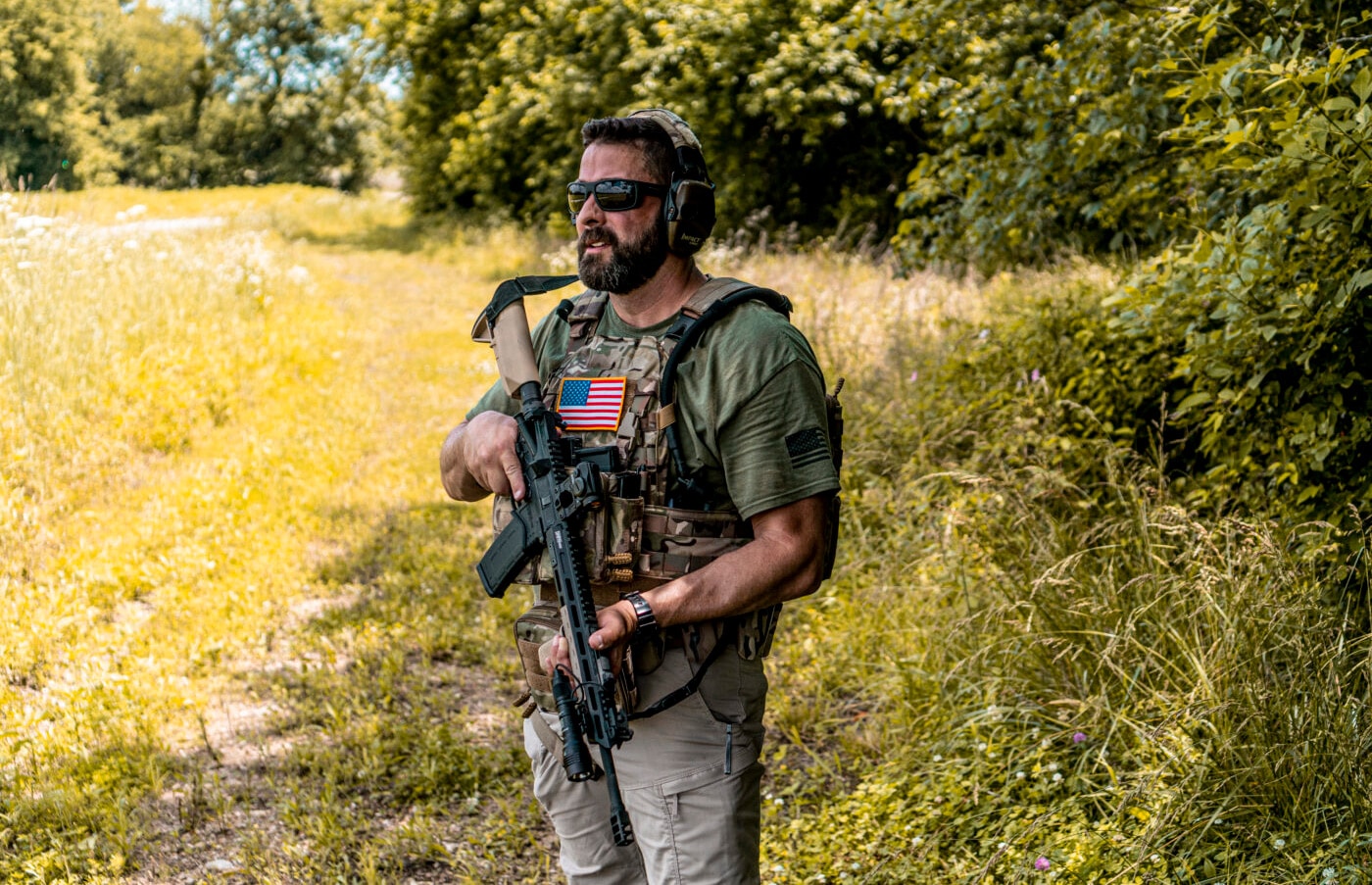
Here is how you set your sling correctly. Put on your gun with the sling and do a ready-up from both high and low ready positions. Tighten the sling to the point that if it got a bit tighter, you’d not be able to do it effectively. That is where you want it.
This setting is tight enough that the rifle is secure but loose enough that you can still get into the fight if you must. This setting is the home where your rifle should live. Every time you put the rifle on, you need to check it. This setting can change because of clothing, gear, or if you’ve been slacking off on hitting the gym and also your diet. Check it every time.
The Next Step
Once you have adjusted the sling, the next thing we have to learn is how to swim out of the sling. Swimming out of the sling drops your support arm out of your sling so you can free it up to use in weapon manipulation.
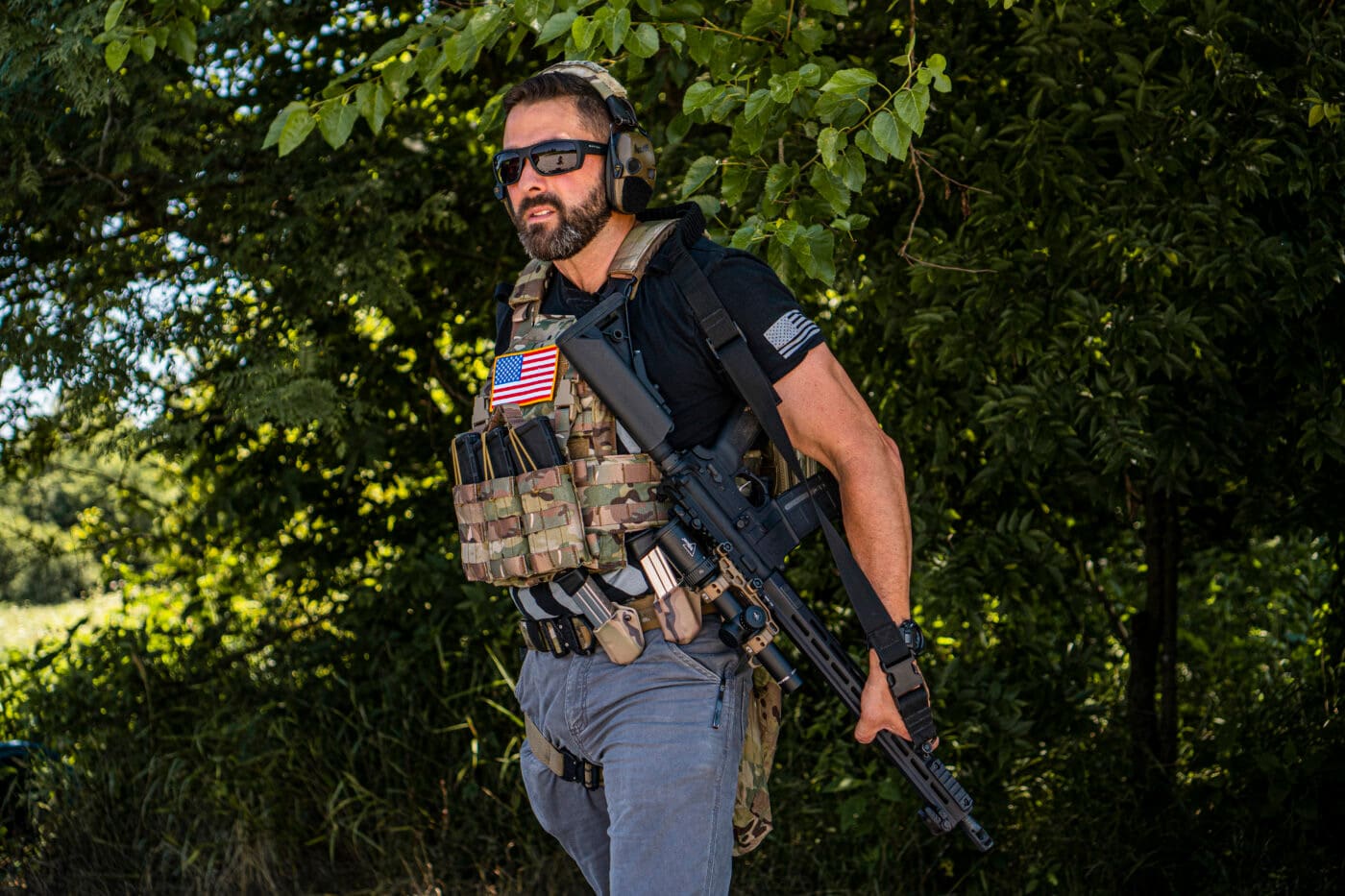
What “swimming out” means is you drop the support arm down out of the sling loop, essentially turning the sling into a big necklace. Working a weapon with your support arm in the sling can be difficult. Imagine trying to clear a double feed or a swollen case in the chamber while having your arm stuck inside the sling. If your sling is tight enough to perform a swim out, you can literally just drop your arm down, and the movement will look very subtle.
To be on the safe side and build those muscle memory pathways, we suggest when starting to practice this move, bend your elbow, let go of the rifle, drop your hand down and then come back up and grab the rifle. Getting in the habit of clearing the sling completely is a great habit to form that avoids you cutting it too short and getting tangled. But in some of our video footage above, you will see Grant drop his elbow out of the sling while his hand never leaves the rifle. Achieving this will take the perfect sling setting and some practice, but it’s worth the effort.
Feeding Concerns
Reloading your rifle with a sling can be difficult with the wrong technique. You don’t have to swim out of your sling with your support arm to do a reload, but it helps. If you remain in the sling, and if your sling is tight, you will notice your sights dip because the entire rifle will follow the tension your body makes in the sling as you reach for a magazine. However, if you swim out you can keep your rifle on target, your eyes will never leave the target as you grab a mag, insert it and drop the bolt — if you do it correctly.
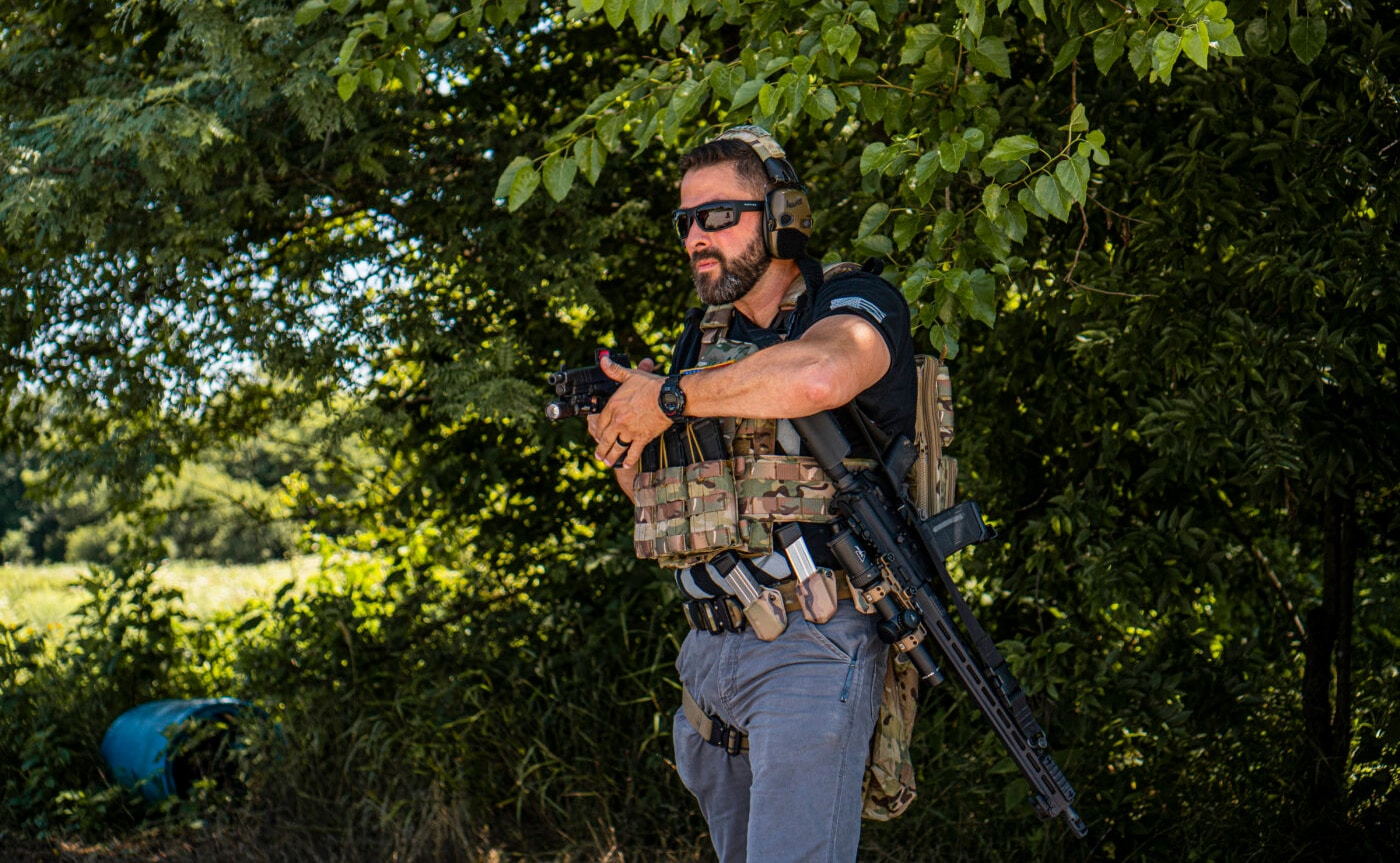
The other issue that you will face on reloads is going to be having that sling get in the way of inserting the mag. Regardless of swimming out, this is something you will have to overcome on your own with practice.
The Support Team
Now comes drawing with your pistol. There are a few different methods I’m sure, but the method Grant LaVelle teaches to students is to take the rifle in your support hand to pull it to the support side, turning the magazine toward your backside as you do it. Once the rifle is down and out of the way, the magazine will be sticking out the same direction as your back. This stops your rifle from drifting back over in front of you because the magazine will catch on your leg.
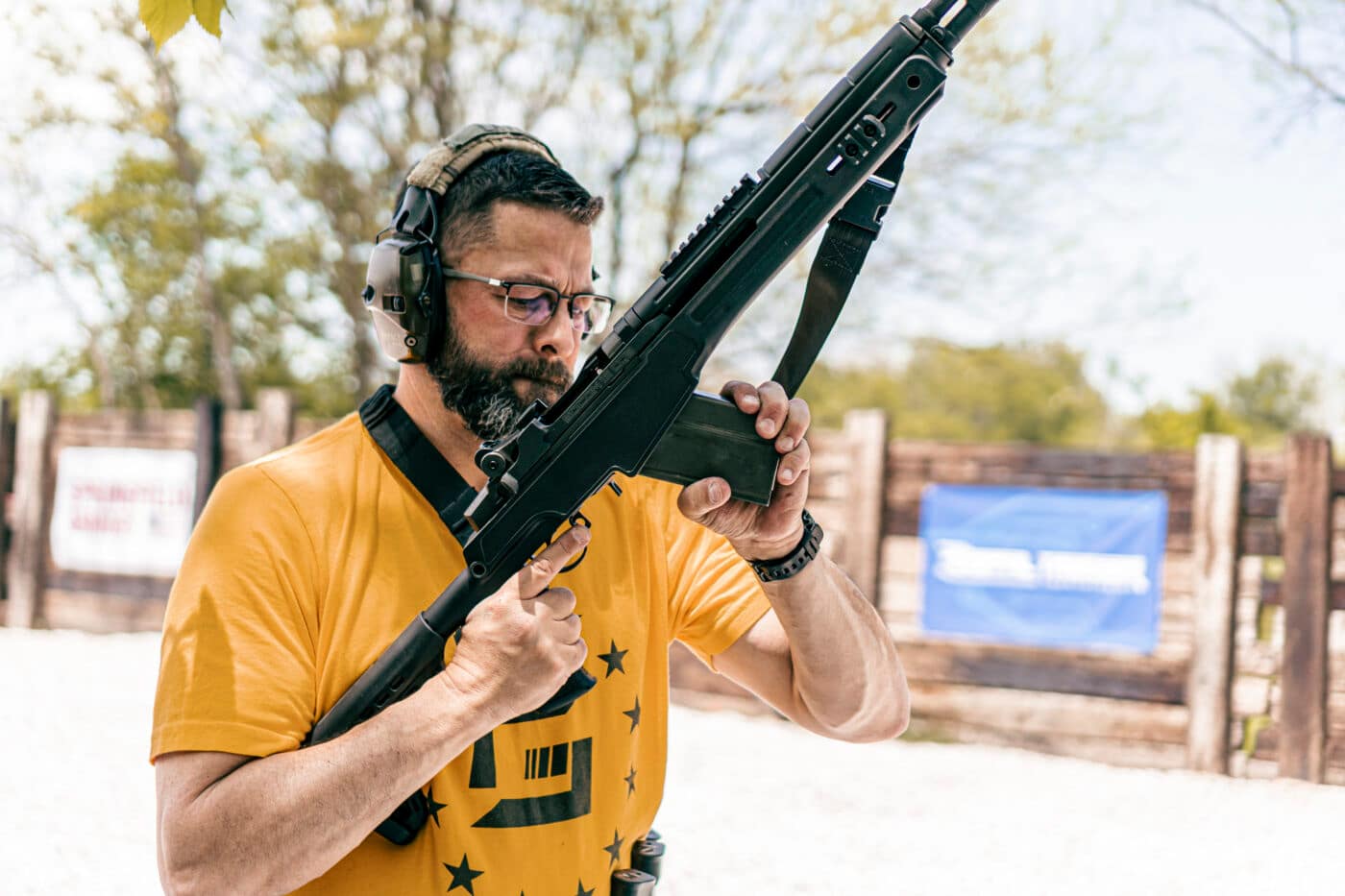
While doing that with his dominant hand, Grant reaches for his pistol. As he draws the pistol, his support hand has moved to his chest to meet the pistol for a high-press transition onto the target. It probably sounds like a lot to do, but in motion, it goes pretty quickly. Check out our video above for some action footage showing this.
Conclusion
Those are some of the big things you have to become efficient at to not become a victim of a sling tangle. Sling work is just as important as holster work, so practice swimming in and out along with reloads and pistol transitions. After all, you can be the most accurate shooter in the world, but if you can’t even get the gun up and ready it doesn’t really matter.
Editor’s Note: Please be sure to check out The Armory Life Forum, where you can comment about our daily articles, as well as just talk guns and gear. Click the “Go To Forum Thread” link below to jump in and discuss this article and much more!
Join the Discussion
Featured in this video
Continue Reading
Did you enjoy this video?

 56
56




